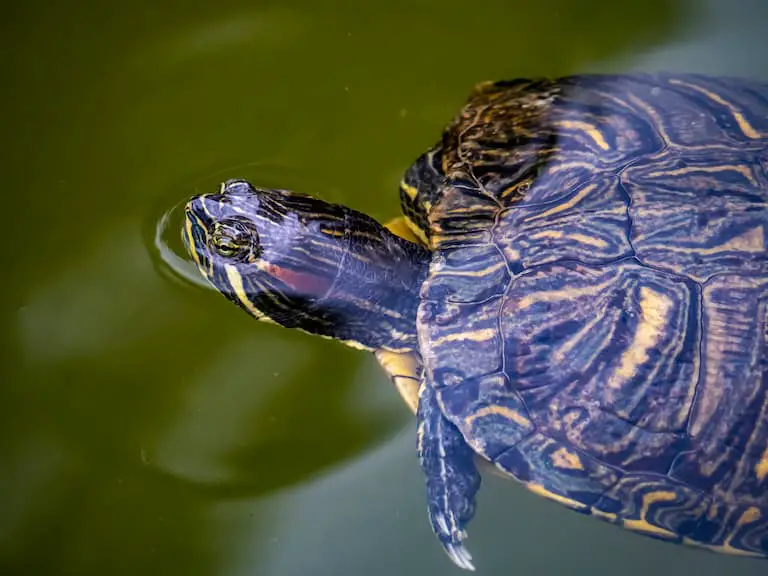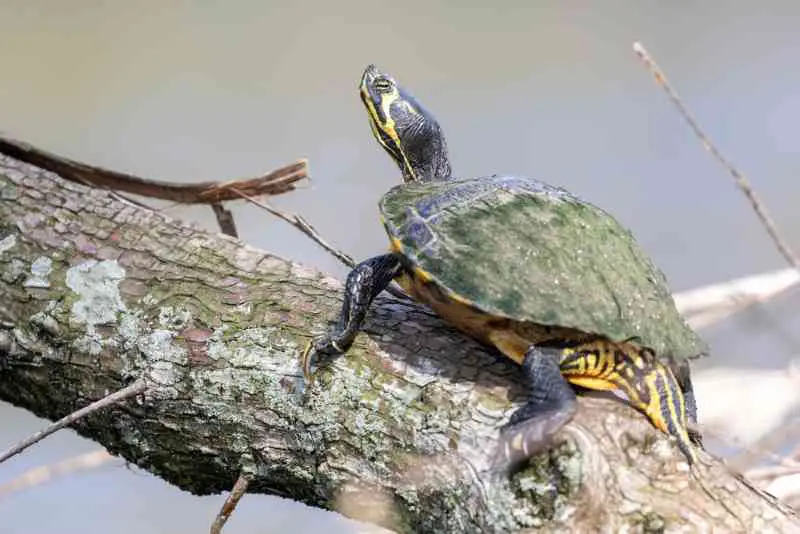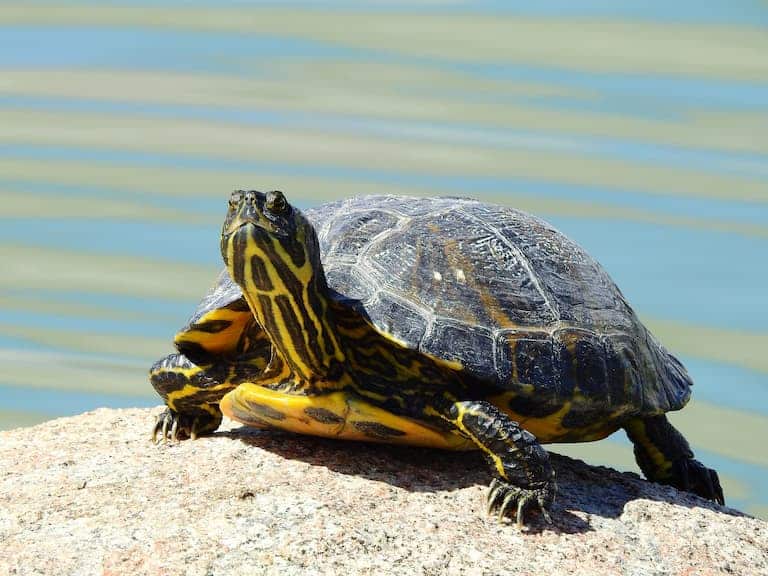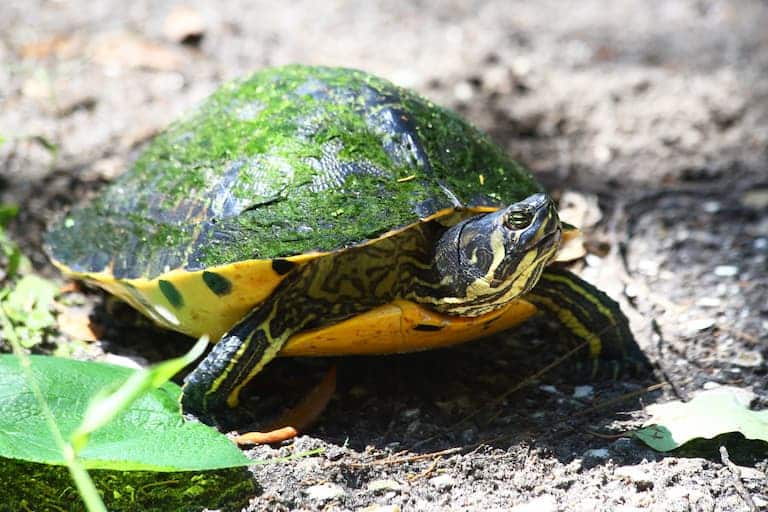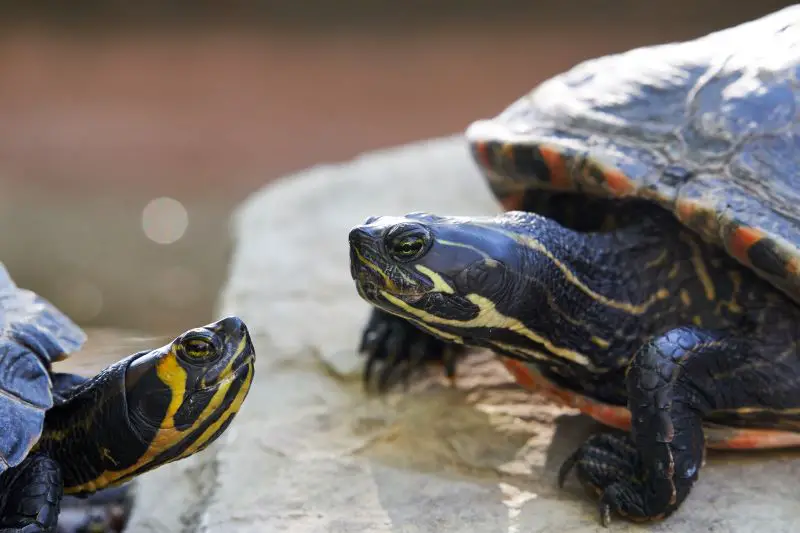All About Yellow-Bellied Slider Shell Rot Spots Explained
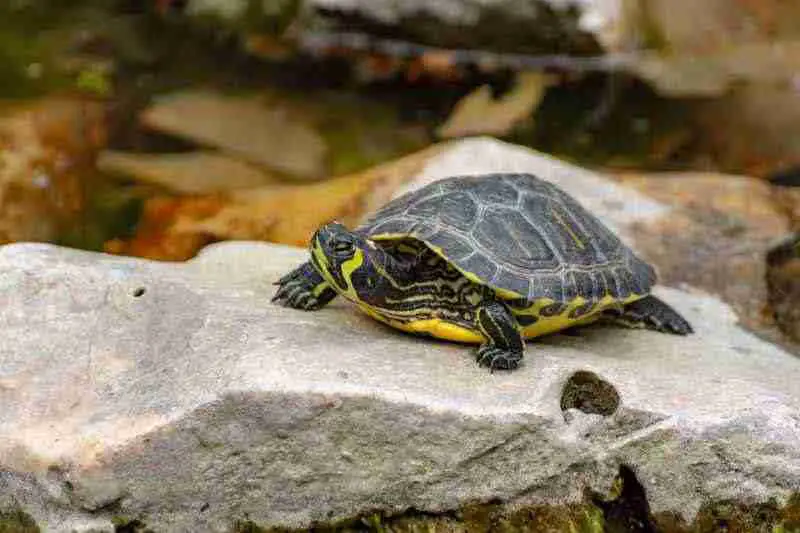
It is normal for a yellow belly slider to have white spots on its shells. They are caused by many reasons, and luckily, all medical problems are entirely treatable.
Observe the spots carefully using visual and physical observation. If the infected areas are soft, it can signify the illness shell rot. However, hard white spots are usually calcium deposits.
Even if you believe your turtle is not experiencing anything problematic, you should always offer aid before requiring medical treatment. Using daily ointments, you can rejuvenate your turtle’s health.
Contents
Why does my yellow belly slider have spots on its shell?
Yellow belly sliders can have spots on their shells for several reasons, including:
- Shell rot
- Calcium deposits
- Shedding
Although there is typically nothing to worry about when you find spots on your turtle’s shell, you should still change the water in your tank. Offer treatment to the discolored areas and take your turtle to a reptile veterinarian if it is necessary.
What are the spots on my yellow belly slider’s shell?
You can usually tell the reason for your yellow belly slider’s spots by the softness or hardness.
If the spots on the shell of your yellow belly slider are soft, it is most likely they are experiencing shell rot. Shell rot is a type of illness that occurs because of poor water conditions. Check your tank’s temperature, cleanliness, and filtration to guarantee that your yellow belly is getting optimal conditions.
Hard and jagged spots are typically caused by calcium deposits from hard water. This common result of using hard water may also cause your turtle to experience shedding. Instead of using mineral-concentrated water, try softer water. You should expect to see less calcium build-up on your turtle’s shell.
Are the spots on my yellow belly slider’s shell dangerous?
The spots on the exterior of your yellow belly slider’s shell are not always dangerous but can be a common sign of shell rot. Shell rot is a disease identified by discoloration on your yellow belly slider’s shell. These yellow or white spots occur when your tank is not maintained correctly, like the temperature, filtration, or cleanliness.
Observe the appearance of your yellow belly slider. Yellow belly sliders with shell rot will feel soft on their spotted areas, whereas other problems will feel hard.
Should I be worried about spots on my yellow belly slider’s shell?
It is best to stay calm when you find anything wrong with your yellow belly slider. Not all spots signify something is wrong with your pet. Spots on your yellow belly slider’s shell can be mineral deposits or shedding. You do not need to worry about either issue since they can be treated promptly.
However, you should help your turtle seek treatment if you see several growing spots on the exterior of your turtle shell. Growing spots are most likely shell rot, a fungal infection that can be problematic to the turtle. Immediately seeking treatment guarantees their health is not in jeopardy.
What to do about spots on my yellow belly slider’s shell
Carefully observe the type of spots on your turtle’s shell. It would help to immediately address spots on your turtle’s shell, especially if they are bacteria-related. Treat the infected area daily with povidone-iodine or sulfadiazine ointment for three weeks, regularly changing the water and filter. Before returning your turtle to its enclosure, you must clean the tank and maintain more sustainable water conditions.
If the spots come from mineral deposits, you can remove them by scrubbing their shell with a 50:50 vinegar and water solution. Allow their shell to dry before returning them to a clean tank.
Shedding is a natural part of a turtle’s life. Therefore, it is entirely normal to see some white areas on their shells. These spots are typically visible underwater and disappear or turn paperwhite when they reach the surface.
